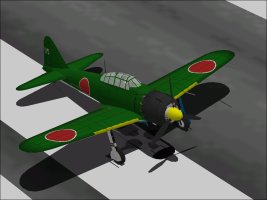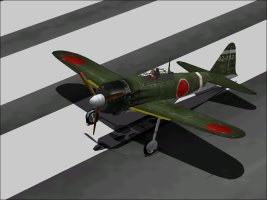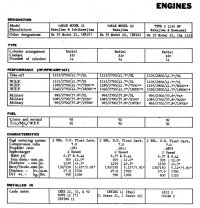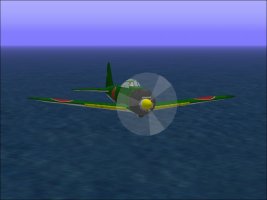The A6M5 was one of the first CFS aircraft I built back in 2001.
Back then, the source for drawings I would use for a project were books.
I would find what looked like a good profile picture and get dimensions from that for my 3D model.
Some of the drawings were fairly good. Others were quite poor. I got lucky in the case of the A6M5. It was a painting, but the general appearance was actually pretty good. There were others such as the N1K2-J Shiden-KAI that I started but eventually scrapped because the original drawing became more obviously bad as I learned more about the aeroplane.
After finding a "good" drawing, I would get dimensions from it using a dial caliper. I still have some of those drawings as scans today. The measuring would take about two full evenings and after that, the building of the model would start. Since this was so early, I wasn't terribly smart or knowledgeable about aircraft weight and balance and some choices I would make turned out to be rather poor. This is why the vertical centerline of the aircraft is lined up with the centerline of the propeller. This was corrected with the A6M2.
The initial versions of the AIR file didn't do more than get the maximum speed correct at SOME altitude. Eventually as the years went by, I learned a lot more and research got much better as well. The last revision to the A6M5 AIR file was back about 2011 or so. It is definitely due for an update since I have a lot more information today than I did back then.
This is where things get interesting.
My own A6M5 had been the reference copy for that aircraft with the latest updates. The other A6M5 model I was recently playing with had another one of my A6M5 AIR files but from about 10 versions back. (It was probably swapped in because the original downloaded one was not good.)
I figured it would make a pretty good exercise to change parameters to BOTH versions to bring them to current specifications. In theory, with identical changes, the result should be very near identical.
The odd thing is that there appears to be something that is not obvious that is making one significantly faster than the other. I will eventually figure it out, but so far, it still remains a mystery. AIR files are not that complicated, so the mystery won't last long.
- Ivan.


Back then, the source for drawings I would use for a project were books.
I would find what looked like a good profile picture and get dimensions from that for my 3D model.
Some of the drawings were fairly good. Others were quite poor. I got lucky in the case of the A6M5. It was a painting, but the general appearance was actually pretty good. There were others such as the N1K2-J Shiden-KAI that I started but eventually scrapped because the original drawing became more obviously bad as I learned more about the aeroplane.
After finding a "good" drawing, I would get dimensions from it using a dial caliper. I still have some of those drawings as scans today. The measuring would take about two full evenings and after that, the building of the model would start. Since this was so early, I wasn't terribly smart or knowledgeable about aircraft weight and balance and some choices I would make turned out to be rather poor. This is why the vertical centerline of the aircraft is lined up with the centerline of the propeller. This was corrected with the A6M2.
The initial versions of the AIR file didn't do more than get the maximum speed correct at SOME altitude. Eventually as the years went by, I learned a lot more and research got much better as well. The last revision to the A6M5 AIR file was back about 2011 or so. It is definitely due for an update since I have a lot more information today than I did back then.
This is where things get interesting.
My own A6M5 had been the reference copy for that aircraft with the latest updates. The other A6M5 model I was recently playing with had another one of my A6M5 AIR files but from about 10 versions back. (It was probably swapped in because the original downloaded one was not good.)
I figured it would make a pretty good exercise to change parameters to BOTH versions to bring them to current specifications. In theory, with identical changes, the result should be very near identical.
The odd thing is that there appears to be something that is not obvious that is making one significantly faster than the other. I will eventually figure it out, but so far, it still remains a mystery. AIR files are not that complicated, so the mystery won't last long.
- Ivan.





